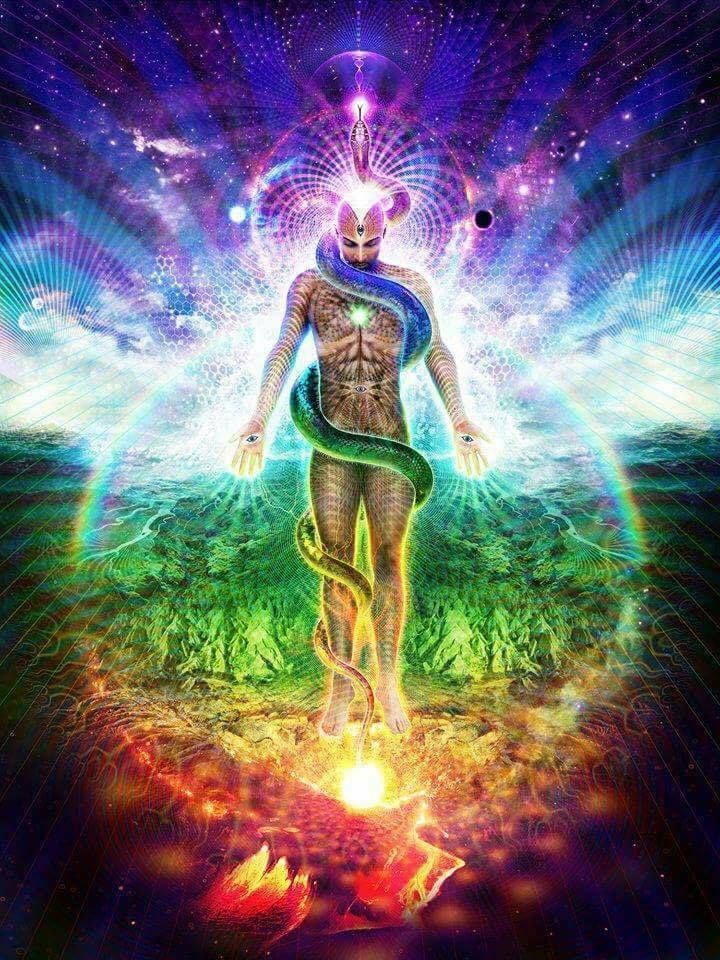
Kundalini energy is not just a mystical concept—it’s the very essence of transformation, the serpent of divine potential coiled at the base of your spine, waiting for the right moment to awaken. Across cultures and traditions, it has been revered as both the ultimate gateway to enlightenment and a force so powerful that, if mishandled, it can bring chaos, suffering, or even madness.
The experience of Kundalini is twofold. Some encounter spontaneous awakenings—sudden explosions of spiritual insight that tear through their being like a bolt of cosmic electricity, leaving them shaken, awed, and often unprepared. Others take the steady, disciplined path—building a foundation strong enough to harness this force, guiding it upwards through careful practice, patience, and dedication.
But no matter how one encounters Kundalini, the real journey is not about a single moment of awakening. It’s about what happens afterward.
A Kundalini awakening is a raw, visceral phenomenon. When it ignites spontaneously—whether through deep meditation, life-altering trauma, or even psychedelic substances—it brings a flood of cosmic insight, unity consciousness, and often an overwhelming sense of divine connection. The seeker may experience visions, ecstatic bliss, or even a temporary dissolution of ego that feels like touching the face of God.
But here’s the catch: these awakenings are like striking lightning. Powerful, illuminating, but fleeting. If the body and mind are not prepared to receive and integrate this energy, it can lead to imbalance, mental instability, or even physical problems. Without a grounded foundation, these glimpses into higher realms remain just that—glimpses, fading into memory rather than transforming one’s life.
This is why the true path of Kundalini is a continuous journey, not a single moment of revelation. It is a discipline—one that requires nurturing the body, mind, and spirit through dedicated practice. Kundalini Yoga offers a structured approach to this, employing techniques such as Asana (postures), Pranayama (breathwork), Mudra (gestures), Bandha (energy locks), Dhyana (meditation), Mantra (sacred sound), and Kriya (energy-clearing exercises). These tools help create a vessel strong enough to hold the immense power of Kundalini, allowing it to rise in a balanced and controlled way.
The journey is not about chasing peak experiences but about cultivating an elevated state of waking consciousness—one that is sustainable, grounded, and luminous.
And then, there’s the shortcut—the alchemical fire of psychedelics. For centuries, entheogens like psilocybin, DMT, and LSD have been used as gateways to higher consciousness. They can dissolve the ego, unveil the interconnectedness of all things, and momentarily align one’s awareness with the divine.
But can they truly awaken Kundalini?
Yes—and no.
Psychedelics can ignite the Kundalini fire, but they don’t build the temple to house it. They can flood the nervous system with an unfiltered surge of energy, but without a trained body and mind, that energy can scatter, overwhelm, or even burn out the seeker. Many who experience psychedelic-induced Kundalini awakenings report visions of sacred geometry, encounters with divine entities, and profound moments of transcendence—but afterward, they find themselves struggling to integrate these experiences into daily life.
The power of psychedelics lies in their ability to crack open the doors of perception. But walking through those doors and sustaining the awakened state requires discipline. If treated with reverence, preparation, and mindful integration, they can serve as a philosopher’s stone—a catalyst for transformation, much like the goddess Durga, who embodies divine wisdom, strength, and grace. But if misused, they can unleash the destructive force of Kali—the untamed chaos that brings death, madness, and dissolution.
Kundalini is not something to be taken lightly. It is not a drug, a thrill, or an escape. It is the force of creation itself, waiting to be awakened within you. Whether through disciplined practice or psychedelic experiences, the path to Kundalini is ultimately one of responsibility.
If approached with respect, patience, and dedication, Kundalini becomes the great illuminator—the radiant force that turns your very being into a temple of light. If rushed, abused, or sought carelessly, it can become the fire that burns everything to the ground.
So, the real question is not whether you should awaken Kundalini, but how you choose to walk the path.
This is your journey. You are the explorer. Walk it wisely.